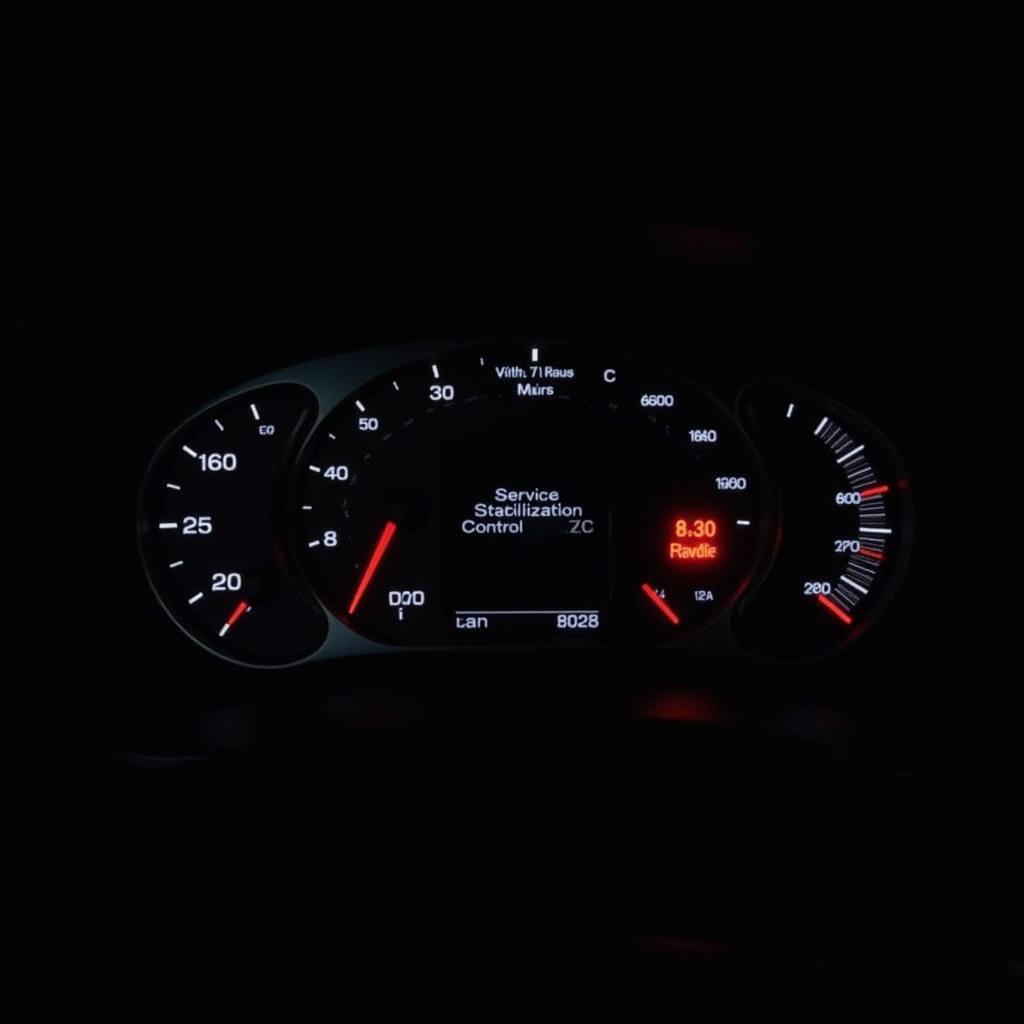What Does Service Stabilization Control Alert Mean on Car?
Imagine cruising down the road, the engine purring smoothly, when suddenly, a warning light flashes on your dashboard: “Service Stabilization Control.” Your heart might skip a beat. What does it mean? Is it safe to keep driving? Should you pull over immediately? Don’t panic! This article will guide you through understanding the Service Stabilization Control alert, its implications, and the steps you need to take.
 Car dashboard with service stabilization control warning light illuminated
Car dashboard with service stabilization control warning light illuminated
Decoding the Service Stabilization Control System
Before we delve into the alert itself, let’s understand what the Service Stabilization Control (SSC) system does. In essence, it’s your car’s silent guardian, working tirelessly behind the scenes to maintain traction and prevent skidding or loss of control, particularly during challenging driving conditions or sudden maneuvers.
Think of it as an advanced safety net. Using sensors strategically placed throughout your vehicle, the SSC system constantly monitors wheel speed, steering angle, and lateral acceleration. If it detects any discrepancies that suggest a loss of traction, it automatically intervenes.
 Car losing control and skidding on a wet road
Car losing control and skidding on a wet road
Why is My Service Stabilization Control Light On?
The illumination of the Service Stabilization Control alert on your dashboard is your car’s way of communicating a potential issue with the system. It’s not necessarily a reason for immediate panic, but it definitely warrants attention. Here are some common culprits:
-
Faulty Steering Angle Sensor: This sensor relays information about your steering wheel position to the SSC system. A malfunctioning sensor can disrupt the system’s ability to accurately interpret your steering inputs.
-
Wheel Speed Sensor Issues: These sensors, often located near the wheels, monitor their rotational speed. Inaccurate readings from a faulty sensor can mislead the SSC system about the vehicle’s stability.
-
Problems with the Hydraulic Control Unit: This unit plays a vital role in modulating brake pressure to individual wheels as needed to maintain stability. Issues with the unit can compromise the SSC system’s effectiveness.
-
Software Glitches: Like any computer-controlled system, the SSC system relies on software. Glitches or errors in the software can lead to malfunctions and trigger the warning light.
 Mechanic inspecting the undercarriage of a car for potential issues with the service stabilization control system
Mechanic inspecting the undercarriage of a car for potential issues with the service stabilization control system
What to Do When the Service Stabilization Control Light Turns On
While the SSC system might not be directly responsible for keeping your car running, ignoring the warning light isn’t advisable.
-
Consult Your Owner’s Manual: Your car’s owner’s manual is your go-to resource for specific information about the Service Stabilization Control system and any recommended actions.
-
Schedule an Inspection: A qualified mechanic can diagnose the root cause of the issue. They have the expertise and tools to read the diagnostic trouble codes stored in your car’s computer, pinpointing the problem area.
-
Address the Issue Promptly: Ignoring the problem can potentially lead to more serious issues and costlier repairs down the line.

